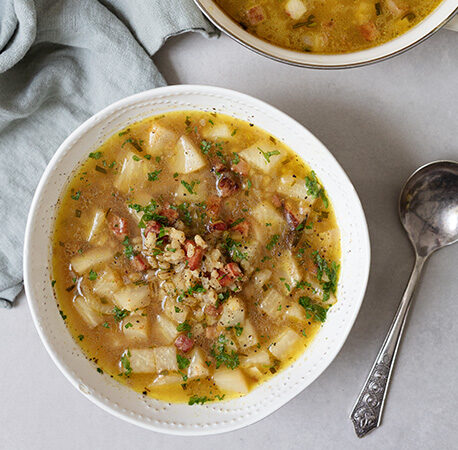When choosing to incorporate fruits and vegetables into your diet, be sure to include a rainbow of colours. Not only does this add to the visual appeal of your plate, but it also increases the amount and variety of vitamins and minerals you’re consuming.
Purple/blue
The plant pigment anthocyanin is what gives blue/purple fruits and vegetables their distinctive colour. Anthocyanin also has antioxidant properties that protect the body’s cells from damage and may be able to help reduce the risk of cancer, stroke and heart disease.
Red
Red fruits and vegetables contain a powerful antioxidant called lycopene, which works to reduce cancer risk and improve heart health. Cooked tomatoes are an especially rich source of lycopene, and could explain why Italians have such low rates of heart disease!
Orange
Carotenoids, such as beta-carotene and lutein, give orange fruits and vegetables their vibrant hue. Beta-carotene gives yellow and orange fruits and vegetables their colour and is converted to vitamin A in the body, where it helps us make hormones and keeps our eyes healthy.
Yellow
As with orange fruit and vegetables, beta-carotene gives yellow varieties their colour. Foods like sweetcorn, peach, papaya and egg yolk are also rich in the antioxidant beta-cryptoxanthin, which may reduce the risk of rheumatoid arthritis.
Green
Green vegetables contain a range of phytochemicals including carotenoids, indoles and saponins, all of which have anti-cancer properties. Dark leafy greens such as spinach and broccoli are also excellent sources of folate, calcium and magnesium.
Brown/white
White fruits and vegetables contain a range of health-promoting phytochemicals such as allicin, which is found in garlic and leeks and known for its antiviral and antibacterial properties. Some members of the white group, such as bananas and potatoes, are also a good source of potassium.
Top tips for increasing your intake of fruits and vegetables.
- Fresh, frozen, canned or dried fruits and vegetables count towards your 7-a-day.
- Frozen, tinned or dried fruits and vegetables can be a cheaper alternative for those on a budget.
- Incorporate more vegetables into dishes — frozen carrots or peas can be added to any meat- or potato-based dish, including lasagna, spaghetti bolognese and shepherd’s pies.
- A spiralizer can be used to transform vegetables such as carrots, courgettes and beetroot into noodle-like shapes. These can replace pasta and noodles in some dishes for a lower carbohydrate option, or increase the vegetable content of a meal.
- summer events
- small business
- gut health
- OATLY
- healthy
- Crudo
- top tips
- All Together Now
- fridge cake
- Events Waterford
- me auld flower
- Events Ireland
- food festival
- news
- dublin
- events Dublin
- dublin festival
- Home-Cooking
- food and drink festival
- online cooking course
- festival line-up
- cooking
- Summer festival
- eco-friendly
- Events
- cosy
- Festivals Ireland
- wine
- Body & Soul
- grapes
- music festival
- south africa






You have to be signed in to comment this post.